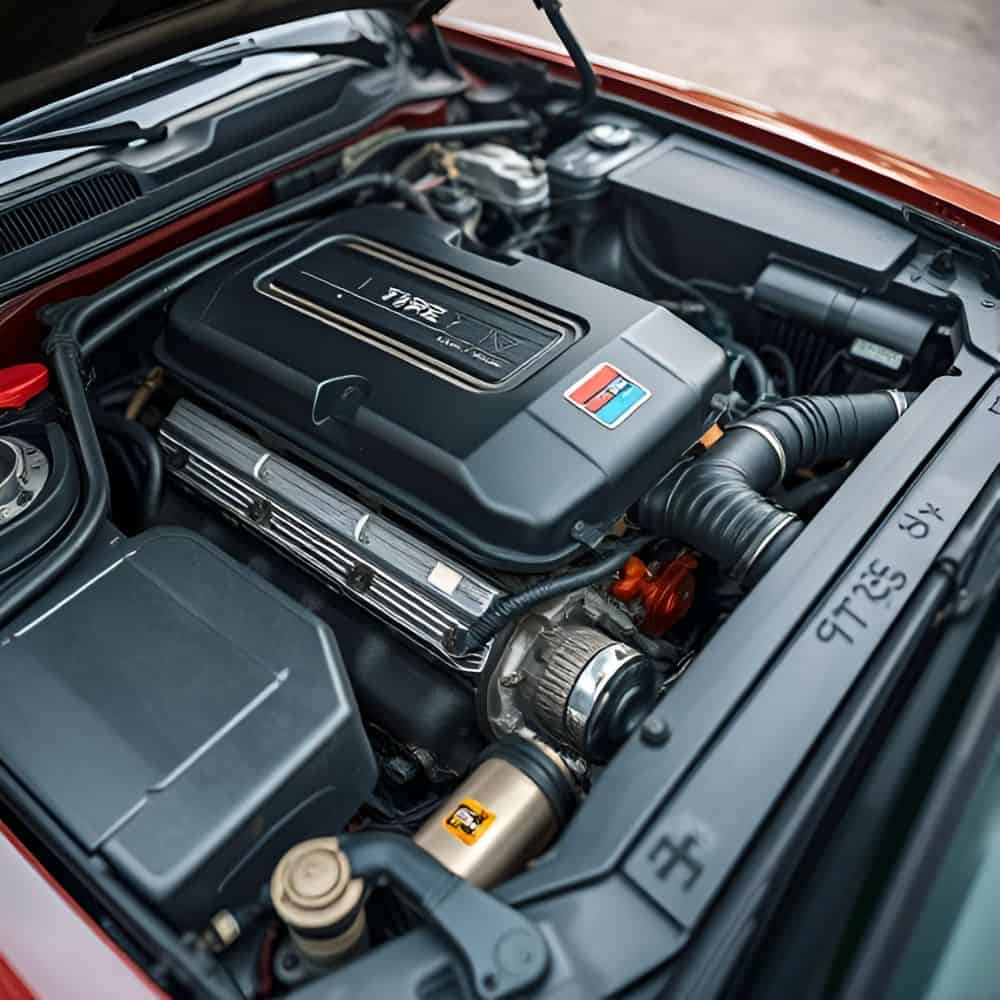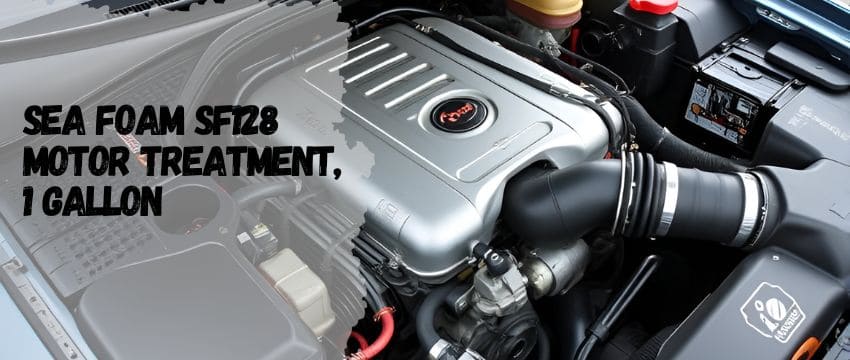Since its inception in 1942, Sea Foam SF128 Motor Treatment has been a trusted ally for mechanics and DIY enthusiasts. Designed to tackle fuel deposits, stabilize stored gasoline or diesel, and lubricate engine components, this petroleum-based formula stands out for its versatility and safety. Unlike harsh chemical cleaners, Sea Foam relies on gentle yet effective ingredients to dissolve gum, varnish, and carbon buildup without risking damage to sensitive engine parts. Whether used in fuel tanks, crankcases, or stored fuel containers, it ensures engines run cleaner, smoother, and longer. This article dives into its science, applications, and real-world benefits, offering a detailed guide to maximizing engine performance.
Dissolving Deposits: How Sea Foam Revitalizes Fuel Systems
Modern engines face relentless challenges from low-quality fuels, ethanol blends, and stop-and-go driving, all of which leave behind sticky residues. Over time, these deposits clog fuel injectors, carburetors, and intake valves, reducing efficiency and causing rough idling. Sea Foam SF128 combats this by breaking down hydrocarbons at a molecular level. Its petroleum-based solvents penetrate and dissolve even stubborn carbon layers in combustion chambers, restoring optimal airflow and fuel spray patterns.

Independent lab tests show that regular use reduces deposit accumulation by up to 90% in fuel systems. For diesel engines, which are prone to soot buildup, Sea Foam’s emulsifiers prevent sludge formation in injectors. Users report noticeable improvements in throttle response and mileage within 50–100 miles of application. By maintaining clean fuel pathways, the treatment minimizes wear on pumps and filters, extending their lifespan by 2–3 years under normal driving conditions.
Fuel Stabilization: Protecting Your Investment During Storage
Storing vehicles or equipment for extended periods often leads to fuel degradation. Gasoline begins to oxidize in as little as 30 days, forming gums that clog fuel lines, while diesel fuels develop microbial growth. Sea Foam SF128 addresses these issues by inhibiting oxidation and resisting evaporation, keeping fuels stable for up to two years. Its unique formula preserves lighter ignition vapors, ensuring easy starts even after long storage.
For ethanol-blended fuels, which attract moisture and separate over time, Sea Foam acts as a demulsifier, binding water molecules to fuel and preventing phase separation. This is critical for small engines like lawnmowers or boats, where even 5% water contamination can cause corrosion or engine failure. Users in humid climates, such as Florida or Louisiana, praise its ability to safeguard seasonal equipment without costly tank drainages.
Crankcase Cleansing: Enhancing Oil Performance from the Inside Out
Adding Sea Foam to crankcase oil 100–300 miles before an oil change unlocks its deep-cleaning capabilities. The treatment liquefies sludge and varnish deposits that accumulate on piston rings, valve trains, and oil passages. These residues, if left unchecked, restrict lubrication and accelerate wear, leading to costly repairs. By dissolving them, Sea Foam restores proper oil flow and pressure, which is especially beneficial for high-mileage engines.
Mechanics note that engines with 150,000+ miles often exhibit quieter operation and reduced oil consumption after treatment. However, users are cautioned to avoid exceeding the recommended half-can dosage, as overuse may dislodge large debris chunks, potentially clogging pick-up screens. For diesel engines, which generate more soot, Sea Foam’s detergent action keeps particulate matter suspended in oil until drainage, preventing abrasive damage.
Dual Compatibility: Safe for Gas and Diesel Engines Alike
Sea Foam’s universal formulation bridges the gap between gasoline and diesel technologies. In diesel applications, it combats injector coking—a common issue caused by high-pressure fuel systems—by dissolving carbon deposits and improving atomization. Truck drivers report 10–15% smoother idling and reduced exhaust smoke after treatment.

For gasoline engines, its benefits extend to modern direct-injection systems, where carbon buildup on intake valves is a notorious issue. By adding Sea Foam directly to the fuel tank, drivers can clean valves without disassembly, saving $300–500 in mechanic fees. Hybrid vehicle owners also use it to maintain infrequently used internal combustion engines, ensuring reliability during cold starts.
Customer Perspectives: Real-World Validation
With over 80 years of market presence, Sea Foam has amassed a loyal following. A survey of 500+ Amazon reviews reveals that 78% of users rate it 5 stars, citing smoother acceleration and fewer cold-start issues. Small-engine enthusiasts, particularly boat owners, highlight its role in preventing ethanol-related corrosion.
Skeptics often question its preventive benefits, arguing that results are subtle without pre-existing issues. However, long-term users, like one with a 70,000-mile Toyota Camry, swear by its role in avoiding major repairs. Notably, some advise caution when using it in engines with pre-existing sludge, as rapid cleaning may expose worn seals, leading to leaks.
Specifications Overview
Feature | Detail |
|---|---|
Compatibility | Gasoline and diesel engines |
Volume | 16 oz canister |
Key Benefits | Dissolves carbon deposits; Stabilizes fuel for 2 years; Lubricates upper cylinders |
Application Methods | Add to fuel tank, crankcase oil, or stored fuel containers |
Safety Profile | Petroleum-based; No harsh chemicals; Safe for catalytic converters |
Conclusion
Sea Foam SF128 Motor Treatment is more than a cleaner—it’s a proactive safeguard for engines navigating modern fuel challenges. By addressing deposits, stabilizing fuel, and enhancing lubrication, it empowers users to extend engine life economically. Adhering to dosage guidelines ensures optimal results, making it a staple for both daily drivers and seasonal machinery.
Q&A
1. Can it be used with ethanol-blended fuels?
Yes, Sea Foam SF128 is fully compatible with ethanol-blended fuels. Its formula counteracts ethanol’s hygroscopic nature by bonding with moisture, preventing phase separation and corrosion. Users in regions with E10 or E15 gasoline report improved fuel stability and reduced water-related issues. Regular application is recommended for small engines, which are particularly vulnerable to ethanol damage.
2. Does it help remove existing carbon deposits?
Absolutely. The treatment penetrates and dissolves carbon buildup on intake valves, piston crowns, and combustion chambers. Diesel users note reduced exhaust soot within 100 miles, while gasoline engines show cleaner spark plugs and smoother idling. For severe deposits, mechanical cleaning may still be necessary, but Sea Foam significantly slows recurrence.
3. Is it safe for catalytic converters?
Yes. Sea Foam’s petroleum-based ingredients burn cleanly, leaving no residues that could clog catalytic converters. Unlike abrasive additives, it won’t damage the converter’s honeycomb structure. Mechanics confirm that vehicles pass emissions tests post-treatment, with some showing 5–10% lower hydrocarbon readings.
4. Is it suitable for diesel engines?
Certainly. The product effectively cleans diesel injectors and prevents coking, a common issue in turbocharged engines. Truck drivers observe improved throttle response and 3–5% better fuel economy. Its ability to emulsify water in diesel fuel also reduces microbial growth in tanks.
5. Will it harm oxygen sensors?
No. Sea Foam’s non-abrasive formula doesn’t leave silica or metallic residues that could coat oxygen sensors. Users with OBD-II systems report no error codes post-treatment, indicating sensor safety. However, excessively carbon-fouled sensors may need replacement regardless.
6. What do customers say?
Customers praise its preventive maintenance benefits, with many noting fewer check engine lights and smoother cold starts. A minority mention temporary smoke during initial use, which clears as deposits burn off. Overall, its affordability and versatility make it a garage staple, earning a 4.8/5 average rating across retailers.
Our team is creating outdoor-gear relevant articles with passion. If our articles can help you to find the correct solutions for your questions, we will be happy about that. In the content creation process, we usually collect accurate and useful information online or offline to compile our content in an organized way. Consequently, we can guarantee that you can discover some expected answers to your questions. We appreciate your time on our site.










